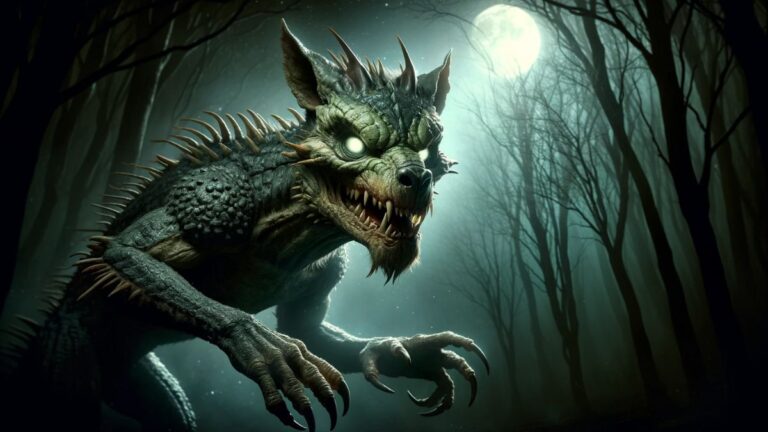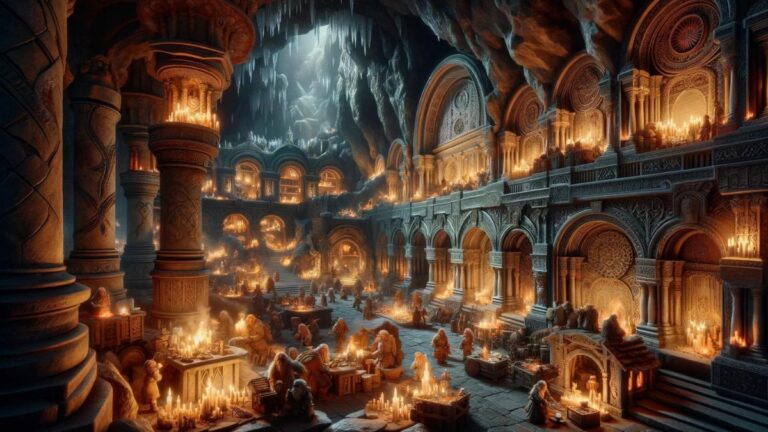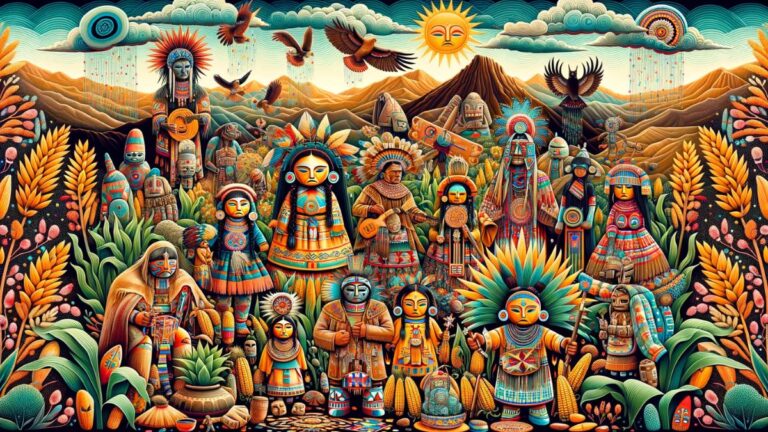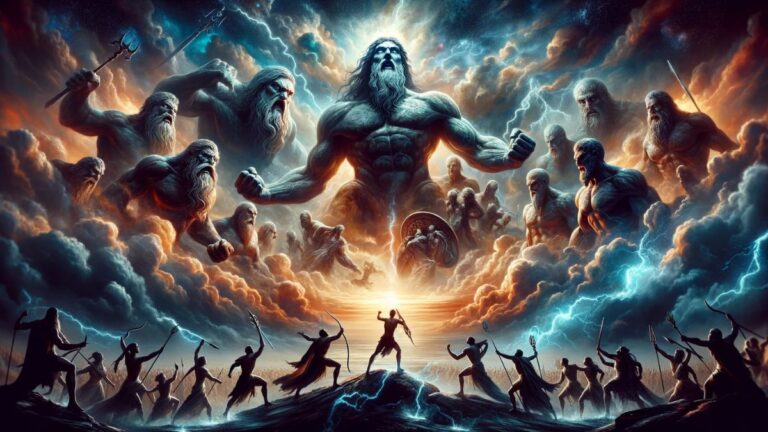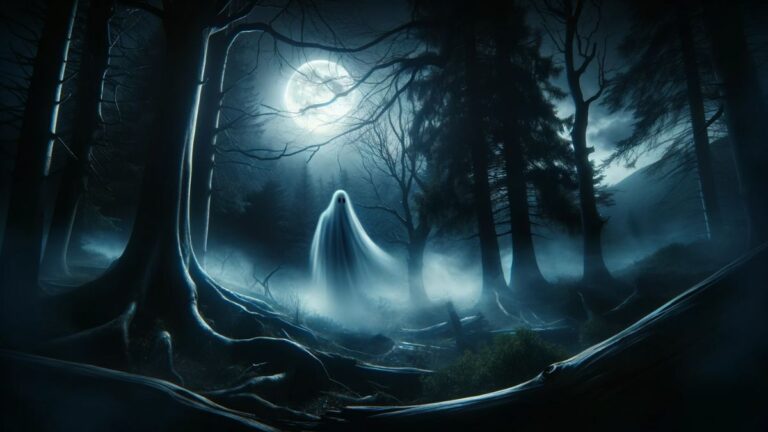The 20 Most Powerful Mythical Creatures (Ranked)
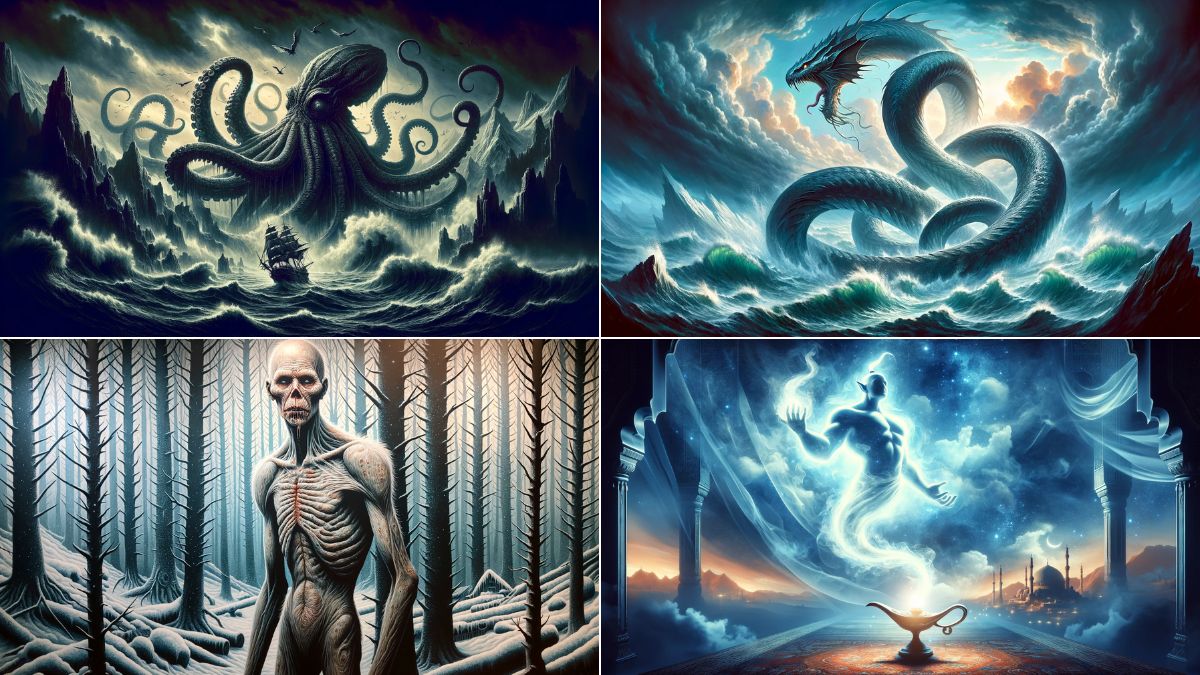
Mythical creatures have always captured our imagination, lurking in the shadows of our folklore and legends. Each creature, from different cultures around the world, holds unique powers and mysteries. In this article, we’ll rank the 20 most powerful mythical creatures. These rankings are not just about raw strength but also about their magical abilities, influence in their realms, and the fear or awe they inspire. Let’s embark on this fascinating journey through myth and legend.
20. Kappa (Japanese Mythology)

The Kappa, a creature from Japanese folklore, is a water demon known for its mischievous and sometimes malevolent behavior. Resembling a humanoid turtle, Kappas are said to inhabit rivers and ponds in Japan. They are skilled in water and known for challenging humans to sumo wrestling, using their aquatic environment to their advantage.
Despite their small size, Kappas are incredibly strong and are believed to possess magical powers, including the ability to control water. Their most distinctive feature is a dish-like depression on their heads that holds water, the source of their power. If this water spills, they lose their strength, a vulnerability that adds a layer of complexity to their character.
19. Banshee (Irish Mythology)
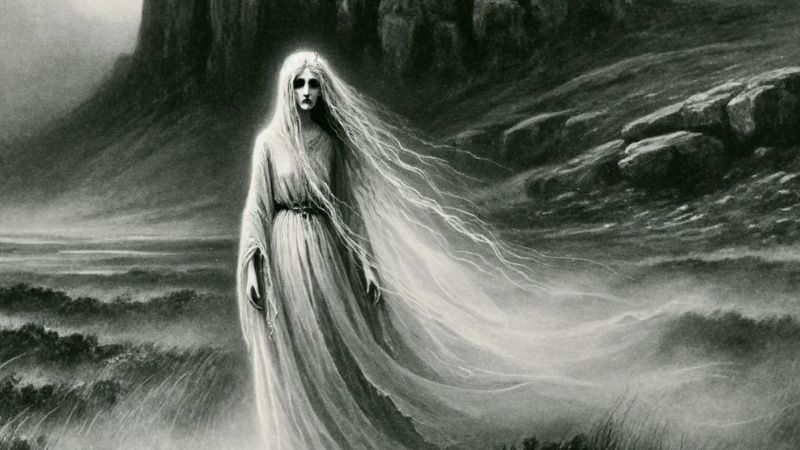
The Banshee is a spirit from Irish mythology, often considered an omen of death. Her power lies not in physical strength but in the supernatural. Characterized by her mournful wail, it’s said that her crying is a prediction of an impending death in the family. The Banshee’s appearance varies, from a young beautiful woman to a frightful hag, symbolizing the spectrum of life and death.
While she doesn’t interact physically with the living world, her presence alone is enough to chill the hearts of those who hear her cries. The Banshee’s enduring power comes from her ethereal nature, as she bridges the world of the living and the dead.
18. Chupacabra (Latin American Folklore)
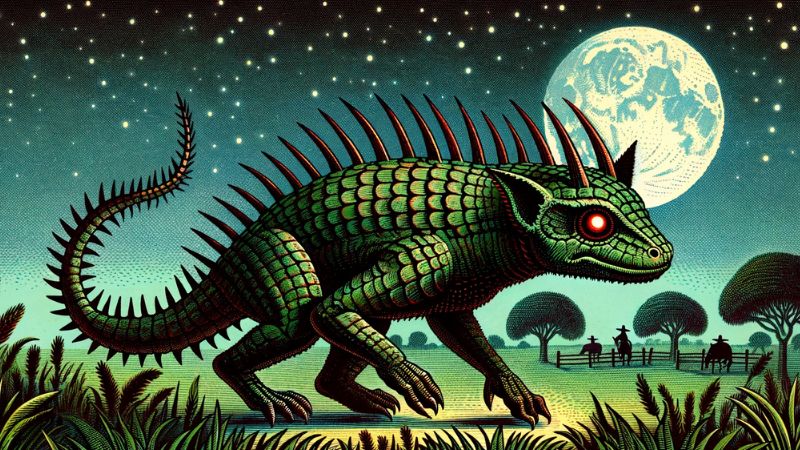
The Chupacabra, a creature of Latin American folklore, is infamous for its attacks on livestock, particularly goats. Descriptions vary, but it’s often depicted as a reptilian creature with leathery or scaly greenish-gray skin and sharp spines or quills running down its back. It is said to be approximately 3 to 4 feet tall, and stands and hops in a fashion similar to a kangaroo.
Despite its fearsome reputation, the Chupacabra’s power is more in the realm of mystery and fear than in physical strength. The creature’s ability to elude capture and the strange circumstances surrounding its attacks contribute to its formidable reputation.
17. Manticore (Persian Mythology)
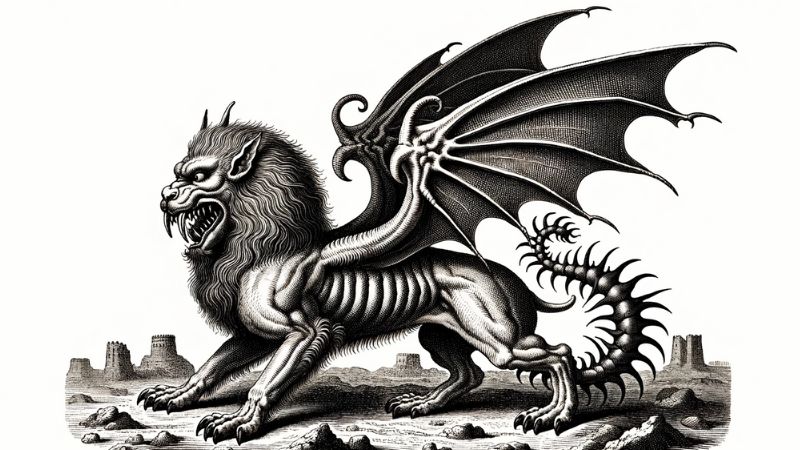
The Manticore, a mythical beast from Persian legend, is depicted as having the body of a lion, a human head with three rows of sharp teeth, and sometimes bat-like wings. Its tail is often described as a spiky weapon, with either a scorpion’s stinger or spikes similar to porcupine quills. This creature is known for its ferocity and strength.
It’s said to be capable of devouring its prey whole, leaving no traces behind. The Manticore’s power lies in its physical prowess and its terrifying appearance, which has made it a symbol of the power and mystery of the wilderness where it’s said to dwell.
16. Golem (Jewish Folklore)
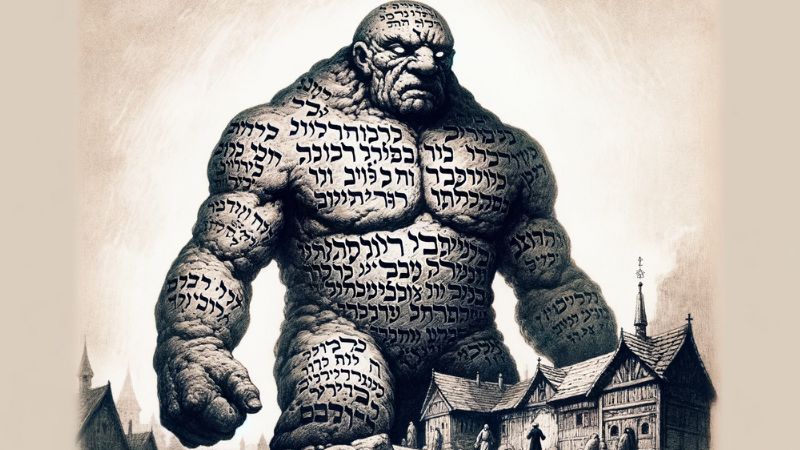
The Golem is a creature from Jewish folklore, typically created from clay or mud. Brought to life through mystical rituals and Hebrew incantations, the Golem is a symbol of human ingenuity and the power of creation. Traditionally, Golems are immensely strong and are created to serve their makers, often as protectors.
Their strength is unparalleled, but they lack free will, acting only on the orders of their creator. The Golem’s power lies in its physical invulnerability and its unwavering obedience, making it a formidable guard or warrior. Despite its strength, the Golem’s true power is in the story it tells about the limits of human control and the dangers of unbridled power.
15. Roc (Middle Eastern Mythology)
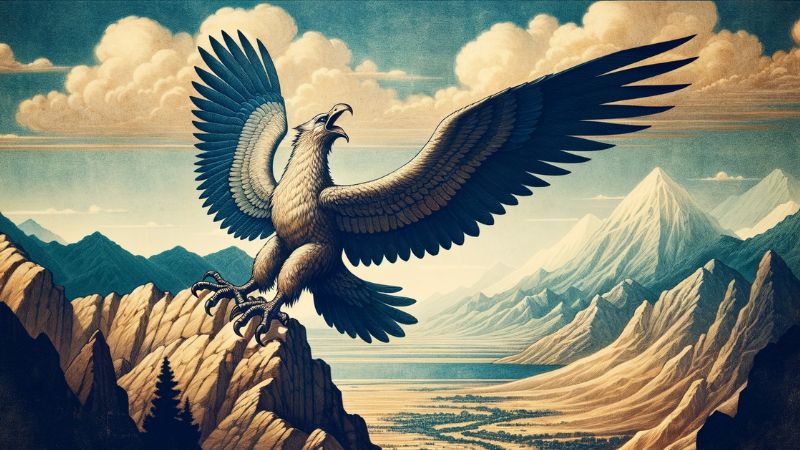
The Roc, a gigantic bird from Middle Eastern mythology, is often depicted as having the strength to carry off fully grown elephants. This enormous bird, similar to an eagle or a vulture in appearance, symbolizes the sheer power and majesty of the natural world. Its size and strength are its most notable features, often used in stories to convey the idea of an unstoppable natural force.
The Roc’s power is in its physical prowess, its ability to dominate the skies, and its role as a guardian of certain areas or treasures in myths. Despite its ferocity, the Roc is also often seen as a creature of nobility and dignity, representing the awe-inspiring aspects of nature.
14. Basilisk (European Legends)
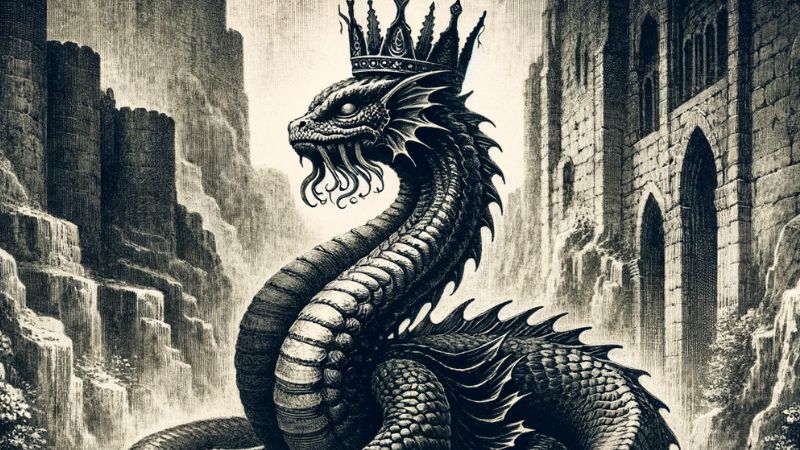
The Basilisk, known as the ‘King of Serpents’ in European legend, is a fearsome creature reputed to have the power to cause death with a single glance. Often depicted as a serpent with a crown-shaped crest, the Basilisk’s most formidable weapon is its lethal gaze, symbolizing the ultimate power over life and death.
Beyond its deadly stare, the Basilisk is also said to have venomous breath and skin so toxic that it can kill plants and split rocks. The Basilisk’s power is deeply rooted in the fear of the unknown and the unseen, making it one of the most dreaded creatures in mythology.
13. Nian (Chinese Mythology)
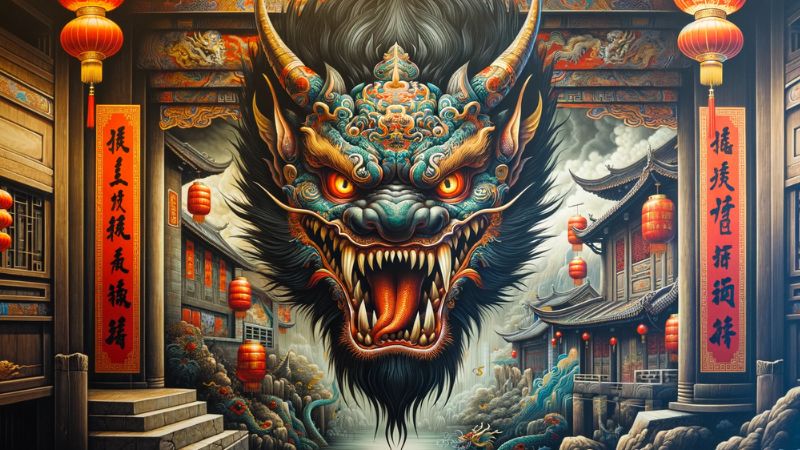
The Nian, a beast from Chinese mythology, is known for its ferocity and strength. This creature, with its powerful jaws and sharp teeth, is said to emerge around the time of the Lunar New Year, preying on livestock and humans. Its power lies in its physical strength and its ability to instill fear.
The Nian is also believed to be sensitive to loud noises, bright lights, and the color red, leading to the traditional Chinese New Year customs of fireworks, lanterns, and red decorations. The Nian’s story is not just one of fear, but also of resilience and community, as people come together to ward off the beast with festivities and celebration.
12. Wendigo (Algonquian Mythology)
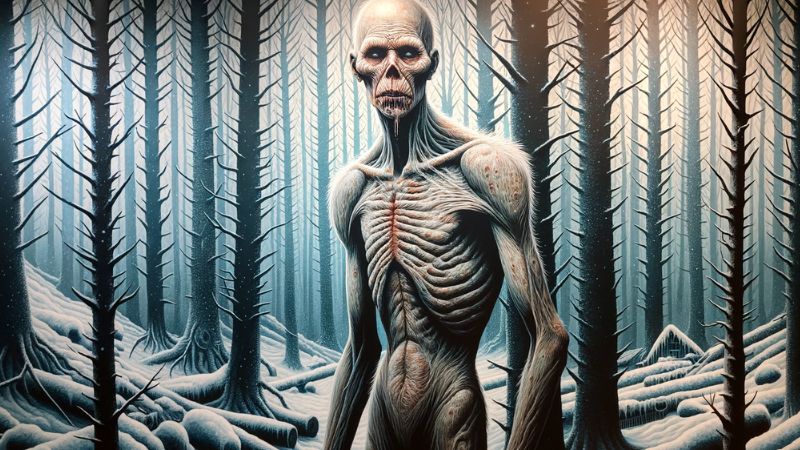
The Wendigo, a creature from Algonquian mythology, is a symbol of insatiable hunger and the dangers of greed. This humanoid creature is often associated with winter, the north, and coldness, as well as with famine and starvation. The Wendigo is said to be gaunt to the point of emaciation, with its skin pulled tightly over its bones and an appearance that is mangled and deformed.
Its power lies in its supernatural abilities, including superhuman strength and speed, and its alleged ability to induce insatiable greed and cannibalism in humans. The Wendigo represents the embodiment of gluttony, greed, and excess, making it a powerful metaphor for the destructive nature of these vices.
11. Cerberus (Greek Mythology)
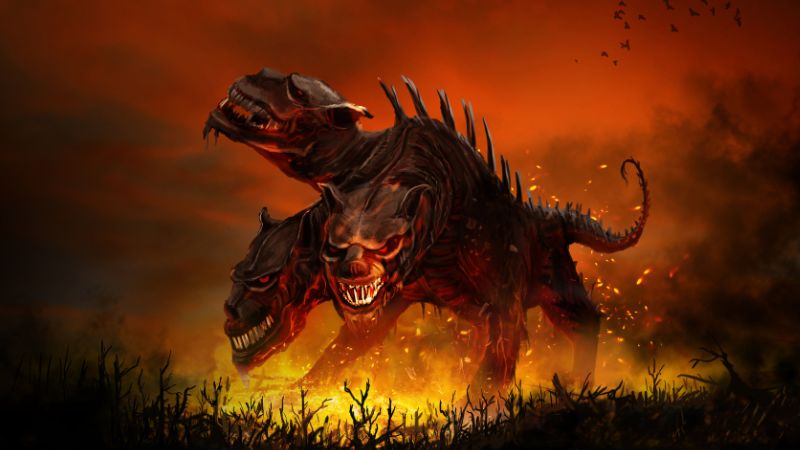
Cerberus, the three-headed dog from Greek mythology, guards the entrance to the underworld, preventing the dead from leaving and the living from entering. Each of Cerberus’ heads is said to represent the past, present, and future, a symbol of time and its inescapable nature.
This fearsome creature’s power lies not just in its physical strength, but also in its symbolic role as the guardian of the threshold between life and death. Cerberus is often depicted as having a mane of snakes, a serpent’s tail, and lion’s claws, elements that enhance his terrifying and formidable presence. His role in mythology is a constant reminder of the inevitability of death and the mysteries of the afterlife.
10. Hydra (Greek Mythology)

The Hydra, a serpentine water monster from Greek mythology, is known for its regenerative ability; cutting off one of its heads results in two more growing in its place. This creature’s power lies in its near-immortality and its ability to adapt and become stronger in the face of adversity. The Hydra’s venom is also said to be deadly, making its every part a threat.
The Hydra symbolizes the idea that some challenges become more complicated the more you confront them, a metaphor for the relentless problems or enemies one might face in life. Its defeat by Hercules, part of his Twelve Labors, required cunning and bravery, underscoring the creature’s formidable nature.
9. Kraken (Norse Mythology)
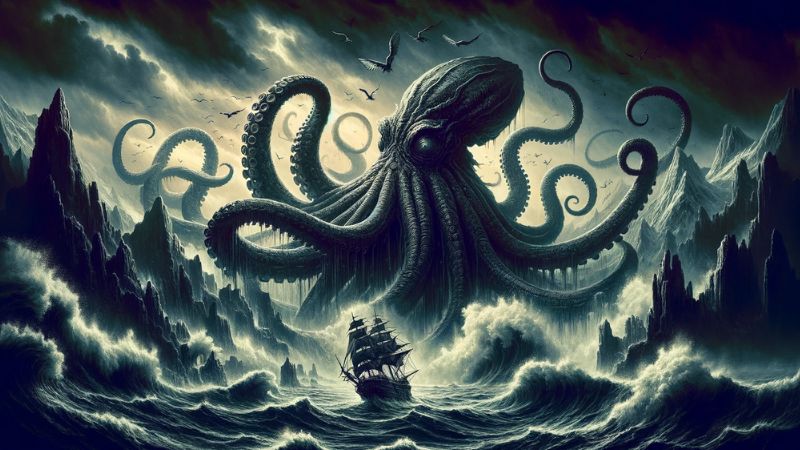
The Kraken, a legendary sea monster from Norse mythology, is said to dwell off the coasts of Norway and Greenland. Often described as a gigantic octopus or squid, the Kraken is famed for its enormous size and fearsome appearance. Its power lies in its ability to create massive whirlpools and to drag entire ships into the ocean’s depths.
The Kraken represents the terror of the unknown depths of the sea and the power of nature, which can be both beautiful and devastating. This creature has been a source of fascination for centuries, embodying the dangers lurking beneath the waves and mankind’s primal fear of the sea.
8. Leviathan (Jewish Mythology)
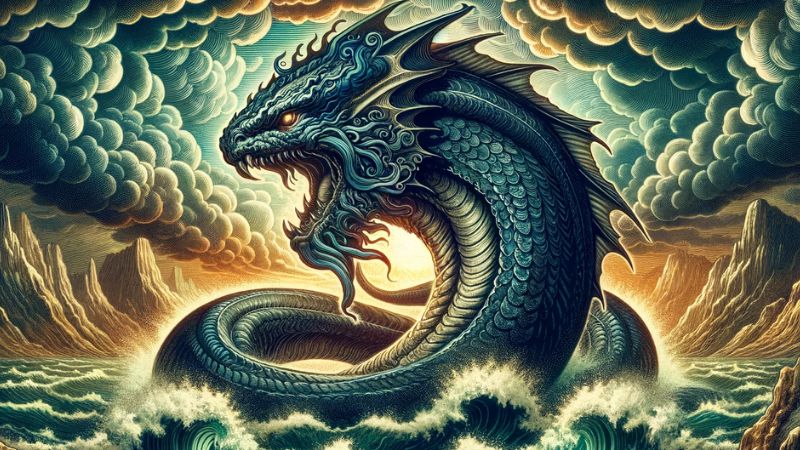
The Leviathan, a creature from Jewish mythology, is often described as a massive sea serpent or dragon. Its immense size and power are said to symbolize chaos and the formidable force of the ocean. The Leviathan is often associated with the end of the world and is said to be destined to battle with the land monster Behemoth.
This creature’s power lies in its representation of the uncontrollable and unpredictable aspects of nature. The Leviathan is a symbol of God’s power over creation and the awe-inspiring aspects of the natural world, often used to demonstrate the might and sovereignty of God in various texts.
7. Anansi (African Folklore)

Anansi, a trickster god from African folklore, is often depicted as a spider and is known for his intelligence, cunning, and ability to turn the tide of any situation to his favor. While Anansi may not possess the physical strength of other mythical creatures, his power lies in his wit and the wisdom of his tales. He is celebrated for his ability to outsmart larger and more powerful foes, using his cleverness and strategic thinking.
Anansi’s stories often convey moral lessons and are a testament to the power of intellect and creativity in overcoming obstacles. Anansi’s influence extends beyond mere folklore; he represents the spirit of rebellion, resilience, and the ability to challenge the status quo. His tales have been passed down through generations, serving as a vital part of the cultural heritage and oral tradition in many African societies, as well as in the African diaspora.
6. Griffin (Greek Mythology)

The Griffin, a legendary creature from Greek mythology, combines the majestic features of an eagle and a lion, often symbolizing strength and wisdom. Griffins are known for their powerful build, with the body, tail, and back legs of a lion and the head, wings, and talons of an eagle. This fusion makes them formidable in both the sky and on land. Griffins are often depicted as guardians of treasure and sacred sites, a testament to their perceived power and majesty.
Their power lies not just in their physical attributes but also in their symbolic representation of vigilance and divine protection. As creatures of air and earth, Griffins bridge the gap between the mundane and the extraordinary, embodying the virtues of courage and nobility.
5. Phoenix (Global Mythology)
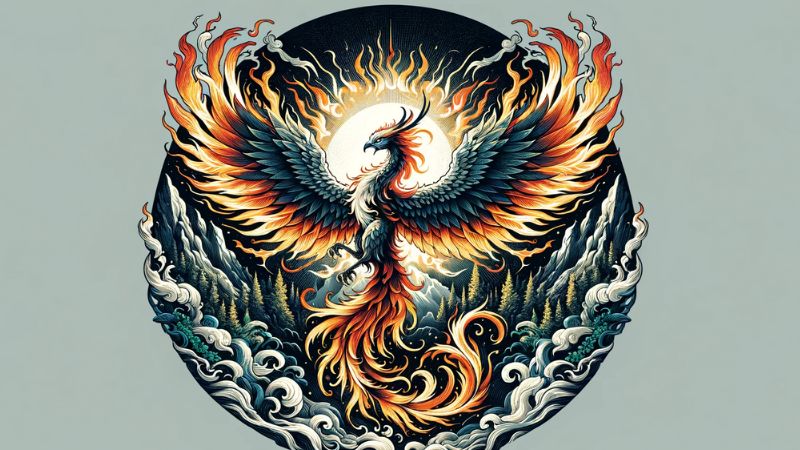
The Phoenix, a mythical bird known across various cultures, is celebrated for its cycle of death and rebirth. Bursting into flames at the end of its life, only to be reborn from the ashes, the Phoenix symbolizes renewal, resilience, and the enduring nature of life. This creature’s power lies in its representation of eternal rebirth and the triumph over adversity.
The Phoenix is often depicted as a magnificent bird with radiant plumage, exuding a glow that symbolizes hope and a brighter future. Its ability to rise anew from its own demise makes it a powerful symbol of regeneration and immortality, transcending physical strength and inspiring awe and wonder.
4. Jörmungandr (Norse Mythology)
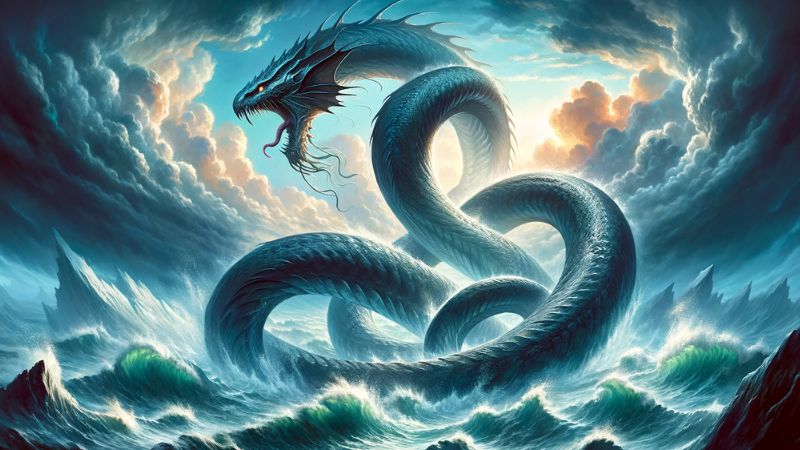
Jörmungandr, the Midgard Serpent from Norse mythology, is a colossal sea serpent that encircles the world, biting its own tail. As a child of Loki, Jörmungandr represents the ultimate embodiment of destruction and chaos. Its sheer size and strength are said to be so immense that its movement causes earthquakes and tsunamis, making it a creature of catastrophic power.
Jörmungandr’s ultimate fate, to battle Thor during Ragnarök, underscores its significance and strength in Norse myth. The serpent’s power is not just in its physical might but also in its symbolic role as a harbinger of the end times, embodying the cyclical nature of destruction and rebirth in the universe.
3. Dragon (Global Mythology)

Dragons, mythical creatures found in cultures around the world, are often considered among the most powerful beings in mythology. They embody a range of attributes: wisdom, strength, and elemental power. Dragons are typically depicted as large, serpentine creatures, capable of flight and breathing fire or other elements.
Their power extends beyond their physical abilities to include magical properties, longevity, and in many cultures, a deep connection to the spiritual or supernatural world. Dragons are revered, feared, and often seen as symbols of power and majesty. Their presence in myths and folklore speaks to their enduring impact as embodiments of ultimate power, wisdom, and the mysteries of the natural and supernatural worlds.
2. Fenrir (Norse Mythology)
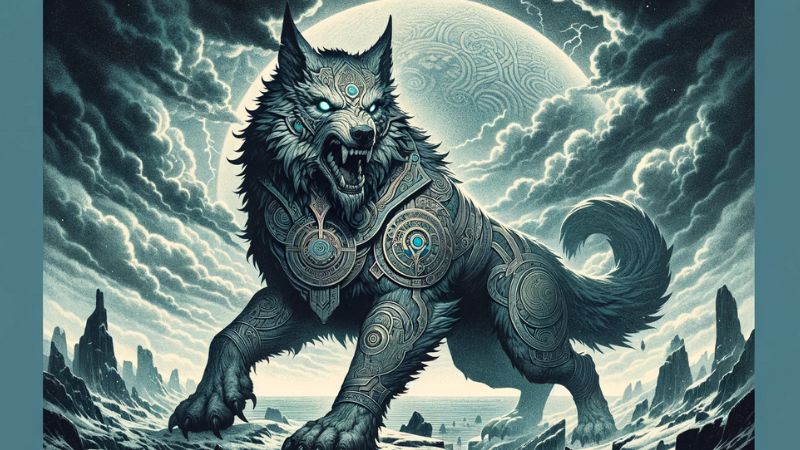
Fenrir, a monstrous wolf from Norse mythology, is one of the most formidable creatures in the pantheon. The son of Loki, Fenrir’s strength is so great that he was feared by the gods themselves. His size and power grow continuously, and it is prophesied that during Ragnarök, he will break free from his bonds and devour Odin, the chief of the gods.
Fenrir’s power is a symbol of the uncontrollable and unpredictable forces of nature and fate. His role in the Norse end of the world mythos showcases his immense strength and the deep-seated fear he instills, even among the gods. Fenrir represents the wild, untamable aspect of nature and the inevitable cycle of destruction and renewal.
1. Genie (Middle Eastern Mythology)
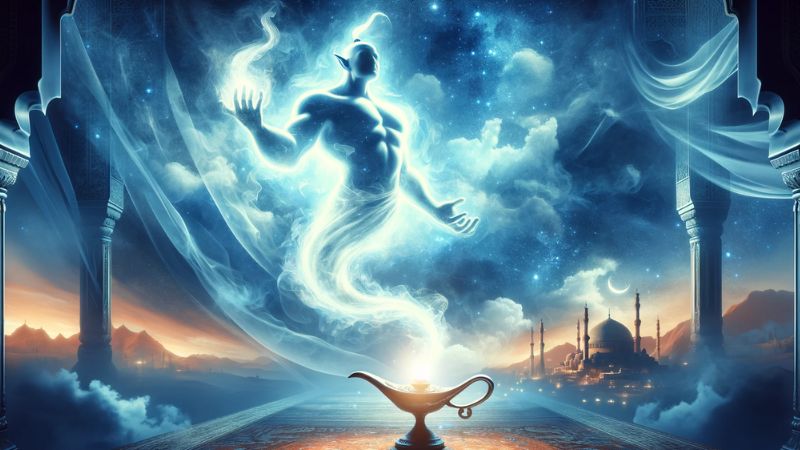
At the pinnacle of mythical power stands the Genie, known in Middle Eastern mythology as a being of immense magical power. Genies, or Djinn, are spiritual beings created from smokeless fire, possessing free will and extraordinary powers, including shape-shifting, invisibility, and the ability to grant wishes. The Genie’s power is virtually limitless, constrained only by the rules of their own realm.
Unlike many mythical creatures that rely on physical strength or ferocity, Genies wield power over reality itself, capable of altering the very fabric of existence according to their will or the wishes of their masters. Their ability to transcend the laws of nature and reality places Genies at the apex of mythical beings, embodying the ultimate fantasy of power and the profound mystery of the unknown.

